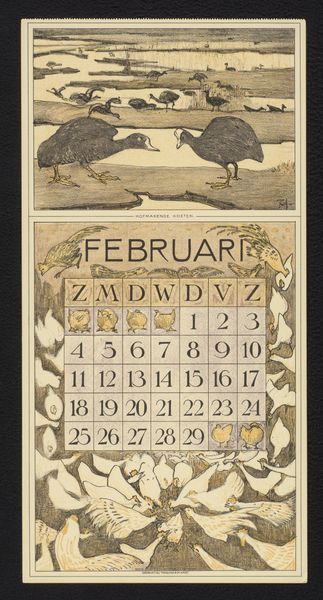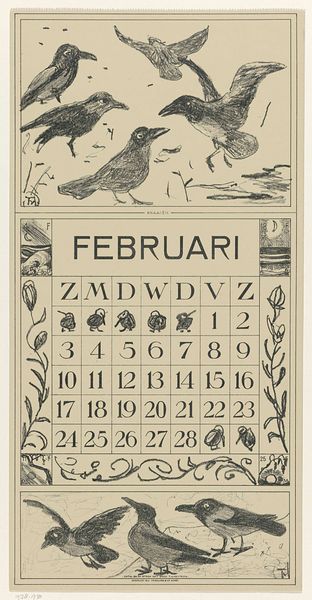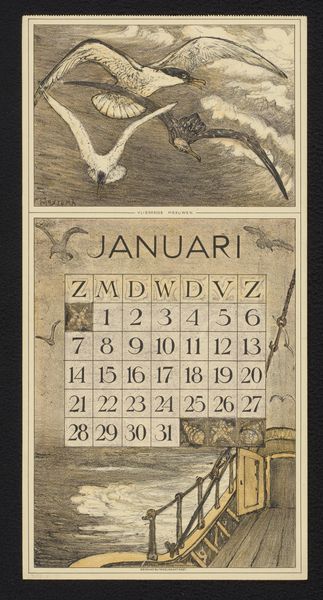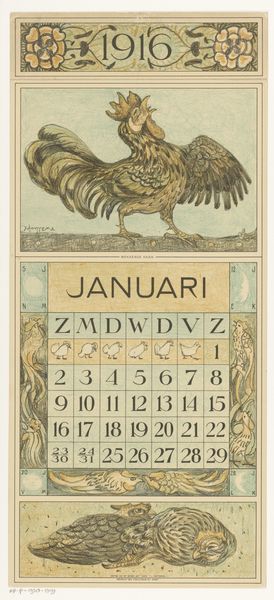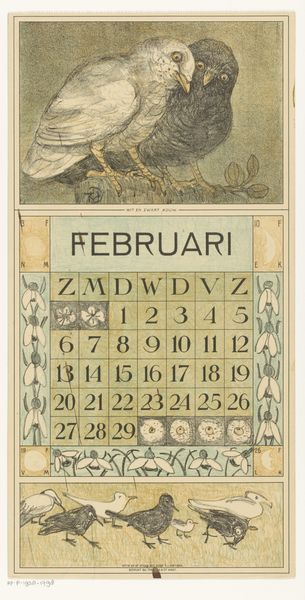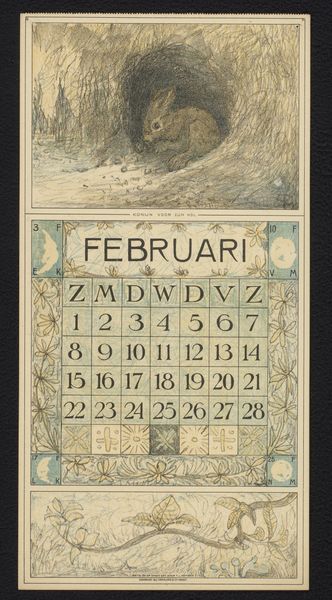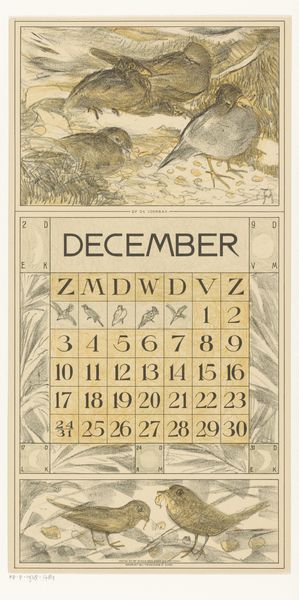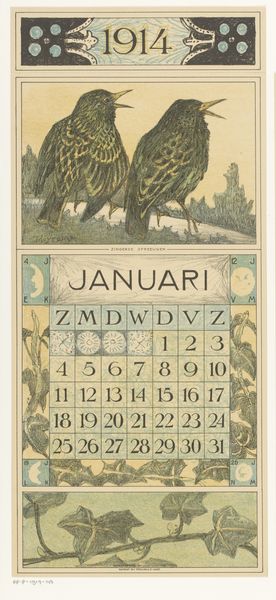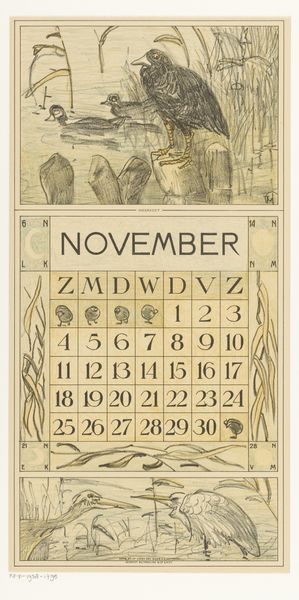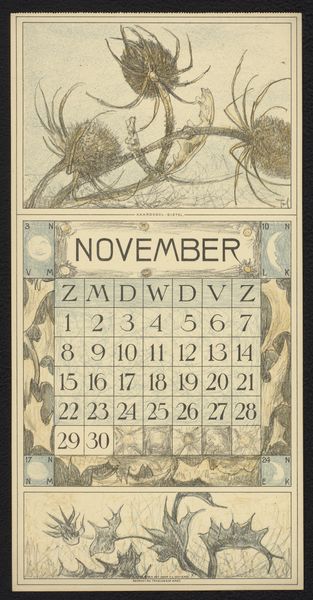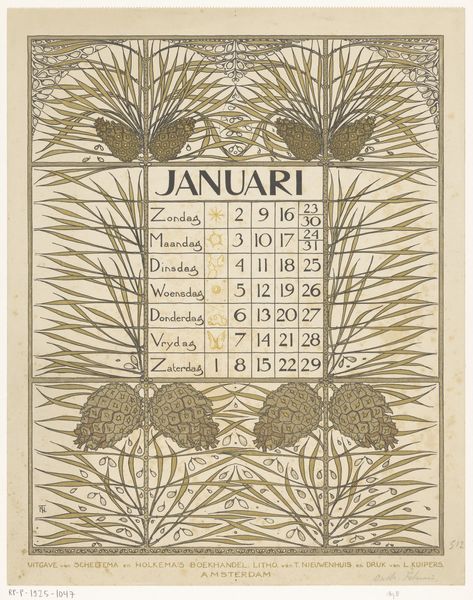
drawing, mixed-media, print, paper
#
drawing
#
aged paper
#
mixed-media
#
art-nouveau
#
parchment
# print
#
old engraving style
#
paper
#
tea stained
#
old-timey
#
19th century
#
golden font
#
intricate and detailed
#
historical font
#
columned text
Dimensions: height 420 mm, width 210 mm
Copyright: Rijks Museum: Open Domain
Curator: Here we have Theo van Hoytema's "Kalenderblad februari met lemuren," a calendar sheet for February from 1916, held at the Rijksmuseum. The mixed-media approach, incorporating drawing and print, lends a unique character to this piece. Editor: My initial reaction is one of quiet whimsy. The aged paper creates a subdued, almost melancholy palette, which is offset by the peculiar lemurs. There is a striking balance in the overall composition, don't you agree? Curator: Absolutely. Van Hoytema often depicted animals and plants in his works, advocating for nature in a rapidly industrializing world. Placing lemurs, creatures associated with Madagascar, at the top could be seen as a comment on colonial exploitation and a longing for the unblemished natural world. Editor: An interesting reading. Visually, the work follows a clear tripartite structure. We move from the lemurs to the grid of the calendar itself, and then to the delicate renderings of crocuses that frame the dates. There's a meticulous attention to detail throughout; observe how each day is nestled amongst flowering crocuses that are coming to life. Curator: The use of Art Nouveau styling, particularly in the lettering and floral motifs, reinforces this idea of organic growth and resistance to the mechanical precision of the calendar grid. The stylized golden font gives off an ancient feeling, making it timeless. This contrasts sharply with the industrial purpose of a calendar. Editor: Note also the subtle interplay of light and shadow, especially within the lemur scene and the gradations used for the crocuses. Despite its subdued colors, it creates depth and volume. He carefully composed all the graphic elements within a unifying frame. Curator: Yes, the limited palette amplifies the sense of history and a collective, perhaps nostalgic, yearning for simpler times. The inclusion of moon phases on either side of 'FEBRUARI' is fascinating. How do you interpret it? Editor: Semiotically, they underscore the passage of time, emphasizing not just dates but also cycles and seasons – a cyclical perception of existence. It transforms the work beyond the confines of a utilitarian object. Curator: Thinking about van Hoytema's worldview, perhaps the work encapsulates the hope for ecological awareness to blossom, much like the crocuses featured so prominently. Editor: A harmonious synthesis of art, nature, and time itself. "Kalenderblad februari met lemuren" has given me much to consider. Curator: It indeed encourages us to rethink our relationship with both the natural world and constructed temporal systems. A complex image in an accessible form.
Comments
No comments
Be the first to comment and join the conversation on the ultimate creative platform.

